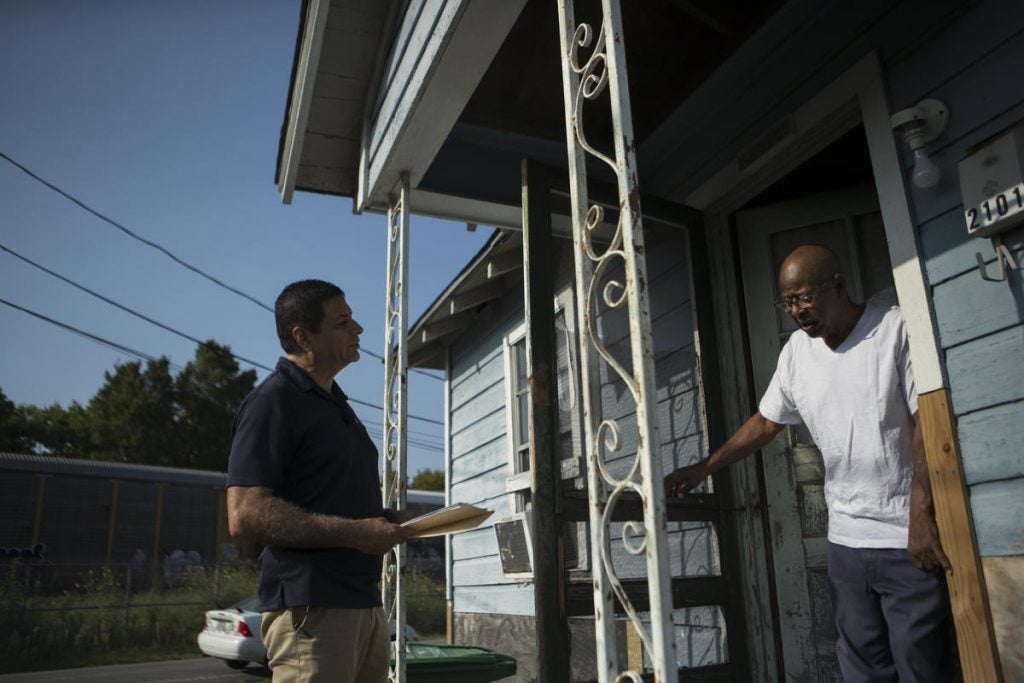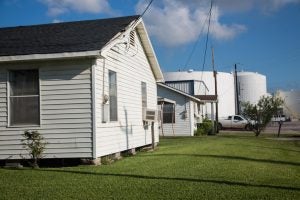Impacts and Disparity
-
"EDF’s work on clean air enhances awareness and advocacy in environmental justice communities. Recent projects focused on community air monitoring enable residents, as well as public health and elected officials, to begin to understand and address ongoing and emerging air quality issues. Education has been valuable for increasing awareness related to air quality and clean air efforts."
Watch: How Traffic Pollution Drives Health Disparities in West Oakland, California
Communities of color are disproportionately burdened by air pollution’s health impacts. Working with the West Oakland Environmental Indicators Project, EDF’s research is helping shed light on the connection between air pollution from diesel trucks and the impacts on local residents’ health. Case in point: research shows that Bay Area neighborhoods with higher percentages of people of color experience, on average, double the rate of pollution-related childhood asthma compared to predominantly white neighborhoods.
The video was produced by EDF and our partner, the West Oakland Environmental Indicators Project. Read more about the Health Impact Assessment from West Oakland here.
Environmental Injustice
Nearly 150 million Americans, or roughly half of the population, live in areas with unhealthy levels of air pollution. The problem disproportionately menaces communities of color and low wealth areas. That is because coal-fired power plants, oil refineries, petrochemical plants, ports, highways and other sources of air pollution are more likely to be located near Black and Latino households.

After measuring high levels of methane, officials conducted a health assessment of neighborhoods near Pleasantville, Texas.
As a result, Black Americans, in particular, face a 54% higher health burden compared to the overall population. Black people are almost three times more likely to die from asthma than white people, while black children are four times more likely to be hospitalized for asthma than white children.
Additional research with Kaiser Permanente has found that street-level differences in pollution, particularly NO2, result in disparities in rates of emergency department visits and hospitalizations among people of all ages with asthma. Children with asthma were particularly vulnerable, and had 15% higher rates of hospitalization due to asthma if living in areas of elevated traffic-related air pollution.
These disparate environmental impacts are not accidental. They are the product of systemic racism and deep structural inequality. Local, state and federal policies enforced segregation, prevented access to reasonably priced mortgages and starved Black and Latino communities of resources. Companies, meanwhile, followed this path of least resistance, putting polluting facilities in communities of color and low wealth areas.

To this day, for example, the lack of protections from zoning laws in Houston, Texas, has allowed warehouses, salvage yards and metal recyclers to add to the air pollution from freeways and the Houston Ship Channel in the historically Black community of Pleasantville. Its cancer risk is higher than the rest of the city, and Pleasantville and other communities of color experience higher rates of lung and chronic obstructive pulmonary disease.
In developing countries, those living in poverty face similar disproportionate harmful health impacts from air pollution. In these countries, pollution levels may be far worse than the U.S., but there is little scientific measurement of outdoor air quality.
One tool that can help governments break down these systemic barriers, give communities back more control, and make sure that all can thrive is high-quality, actionable data.
-
Underfunded schools located in districts with limited resources are frequently unable to address the harmful effects of extreme heat. Children in these environments must contend ...
-
Health data needs to inform targeted environmental justice initiatives
Using new air monitoring techniques, advances in modeling, and community-based participatory research, studies confirm that neighborhoods which have experienced historical racism also experience higher levels ... -
KQED: West Oakland Environmental Justice Leaders on What’s Changed, What Hasn’t in the Neighborhood
Many of the neighborhood children had asthma, the nurse told her. Ms. Gordon had also noticed that same health condition, for both children and adults, ...

